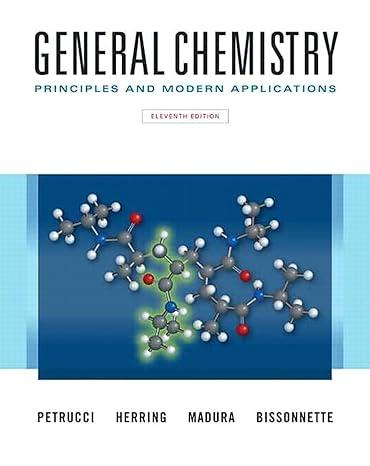In the Mohr titration, Cl - (aq) is titrated with AgNO 3 (aq) in solutions that are
Question:
In the Mohr titration, Cl-(aq) is titrated with AgNO3(aq) in solutions that are at about pH = 7. Thus, it is suitable for determining the chloride ion content of drinking water. The indicator used in the titration is K2CrO4(aq). A red-brown precipitate of Ag2CrO4(s) forms after all the Cl- has precipitated. The titration reaction is Ag+(aq) + Cl-(aq) → AgCl(s). At the equivalence point of the titration, the titration mixture consists of AgCl(s) and a solution having neither Ag+ nor Cl- in excess. Also, no Ag2CrO4(s) is present, but it forms immediately after the equivalence point.
(a) How many milliliters of 0.01000 M AgNO3(aq) are required to titrate 100.0 mL of a municipal water sample having 29.5 mg Cl-/L?
(b) What is [Ag+] at the equivalence point of the Mohr titration?
(c) What is [CrO42-] in the titration mixture to meet the requirement of no precipitation of Ag2CrO4(s) until immediately after the equivalence point?
(d) Describe the effect on the results of the titration if [CrO42-] were (1) greater than that calculated in part (c) or (2) less than that calculated?
(e) Do you think the Mohr titration would work if the reactants were exchanged—that is, with Cl-(aq) as the titrant and Ag+(aq) in the sample being analyzed? Explain.
Step by Step Answer:

General Chemistry Principles And Modern Applications
ISBN: 9780132931281
11th Edition
Authors: Ralph Petrucci, Jeffry Madura, F. Herring, Carey Bissonnette





